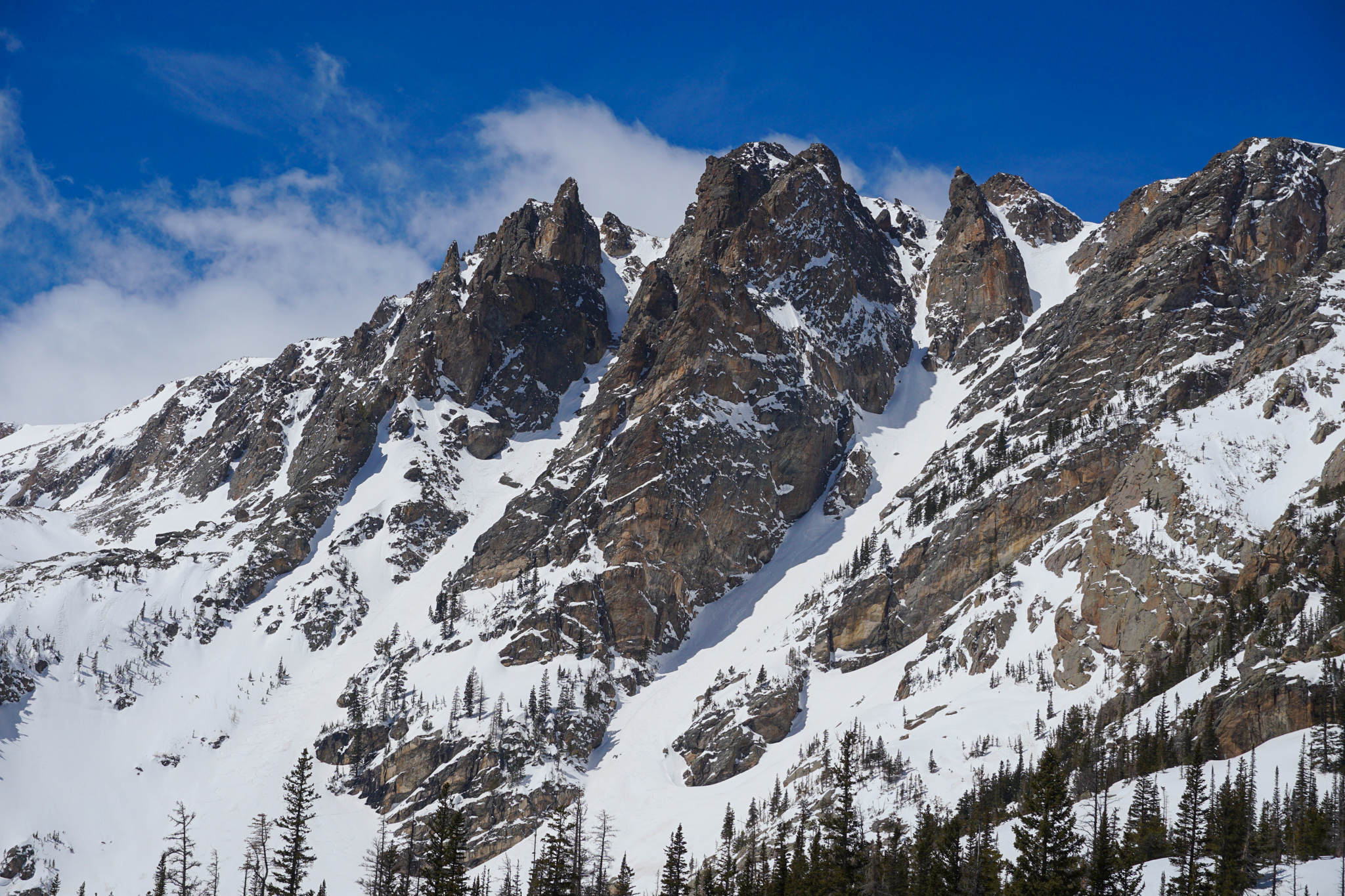Rocky Mountain Junk Show
Rocky Mountain National Park is at the northern end of the Front Range Mountains in Colorado, about 3 hours north of Breckenridge. Initially, Jacob and I were not planning on venturing that far but we had knowledge that two prominent couloirs he wanted to ski, Dragon’s Tail and Dead Elk, had slid the week before. It felt like it made sense to drive a little further to ski some lines we knew would be safe and I would get to see a new part of Colorado.
Although the peaks in Rocky Mountain National Park are not any higher than other Colorado Peaks, they are certainly more impressive. Glaciers have carved vertical rock walls and couloirs. As we drove in, it reminded me of the big walls of the Wind River Range, although without the 10 mile approach. Instead, we drove right into the heart of the range. Typical Colorado.
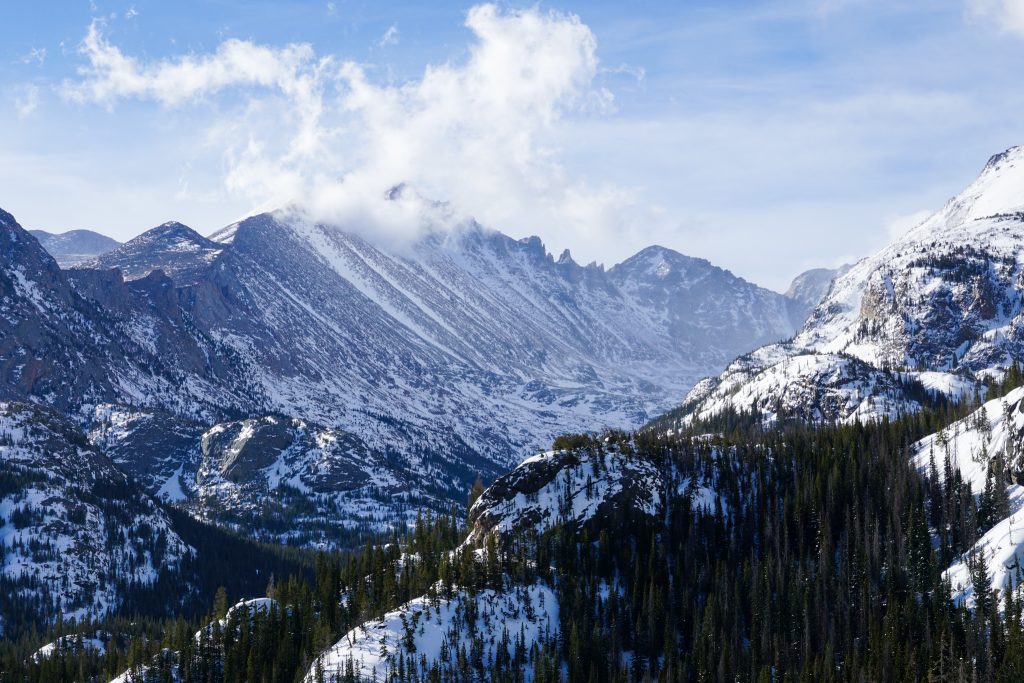
A short 30 minute skin led us to Dream Lake and the first clear view of Hallet Peak and the Dragon’s Tail and Dead Elk Couloirs. This is such a popular winter hike that the trail is packed down to ice and there were many hikers already out on a sunny weekend.
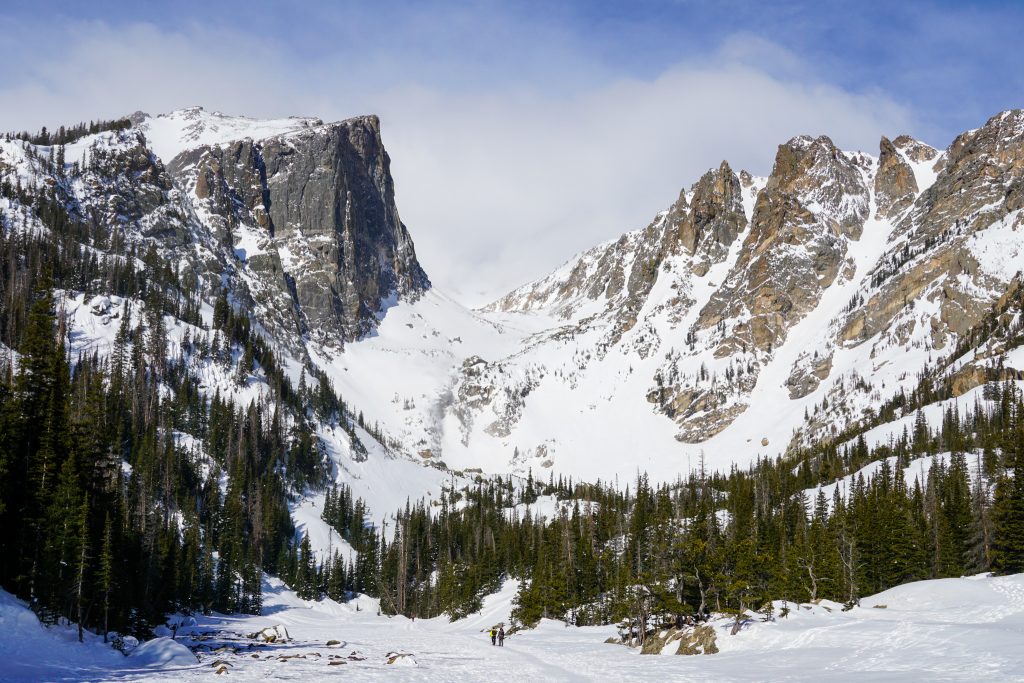
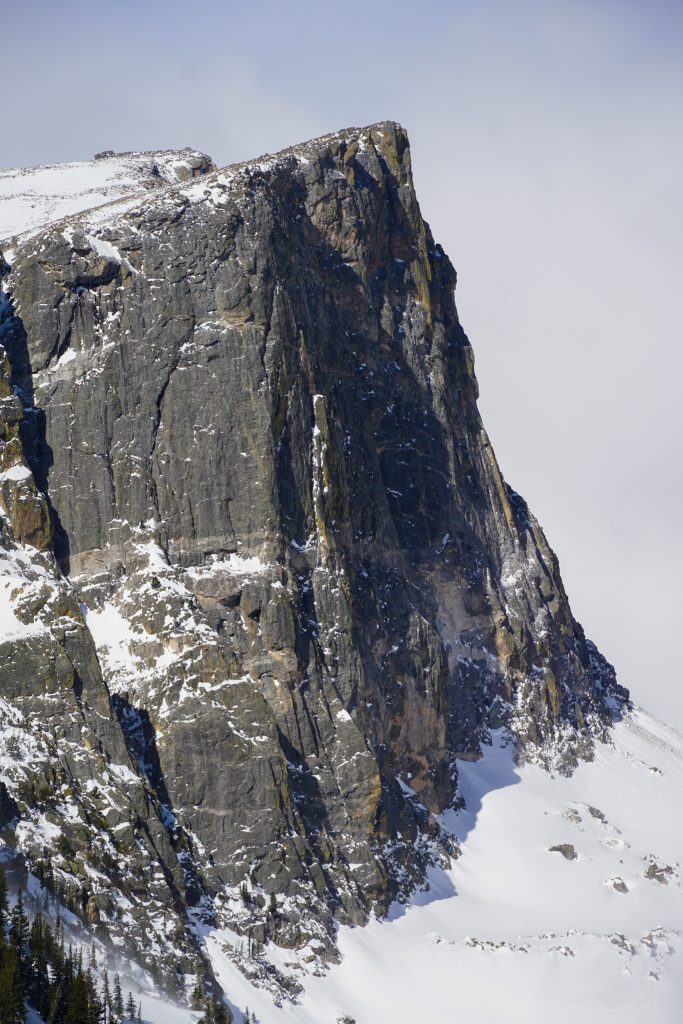
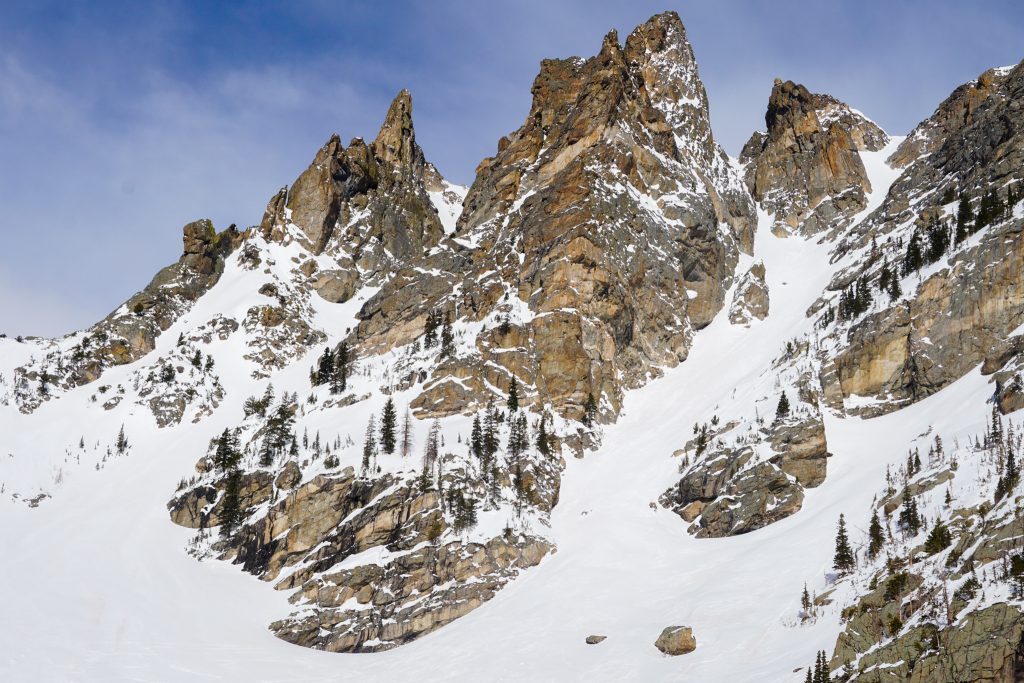
We skinned to the little wind scoop beneath the rock buttress and transitioned, putting on harnesses (in case we decided to go down Dead Elk, which required a rappel partway down) and crampons. Jacob’s friend Trevor was along with us, and it was his first time climbing steep snow with crampons and an ice ax.

It seemed like there were a dozen people ahead of us, but somehow we ended up breaking trail up the Dragon’s Tail couloir. It was a beautiful climb with dramatic walls and views around us.
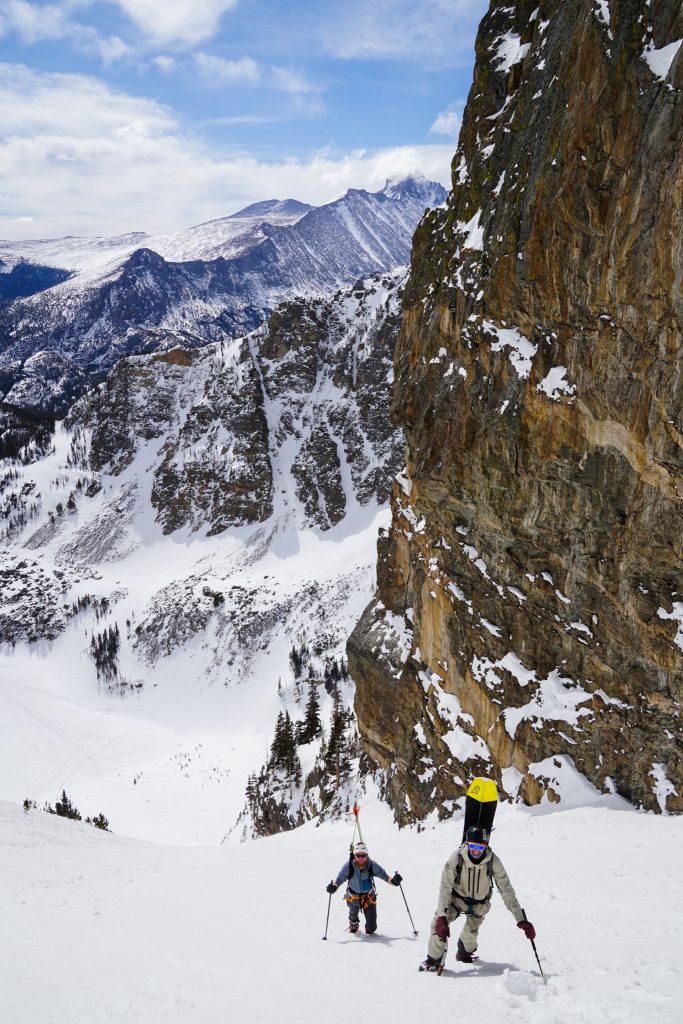
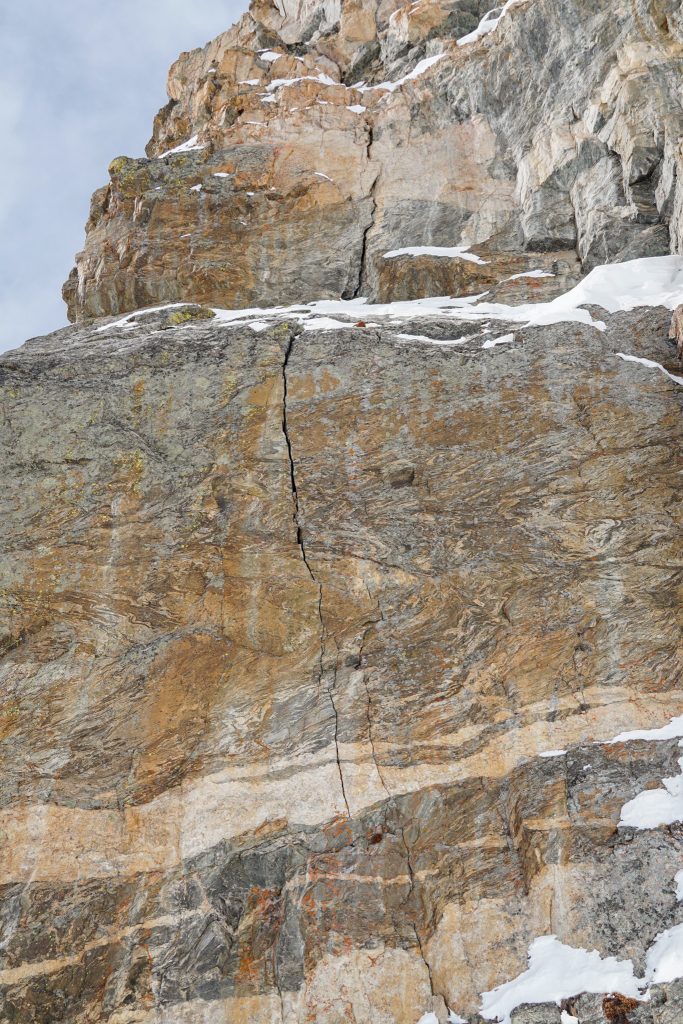
When the couloir forked, we stayed left, which is the standard route. It got narrower until there were some rocky mixed cruxes we had to sneak through. It was engaging climbing and definitely non trivial, but Trevor did incredibly well for someone new to this.
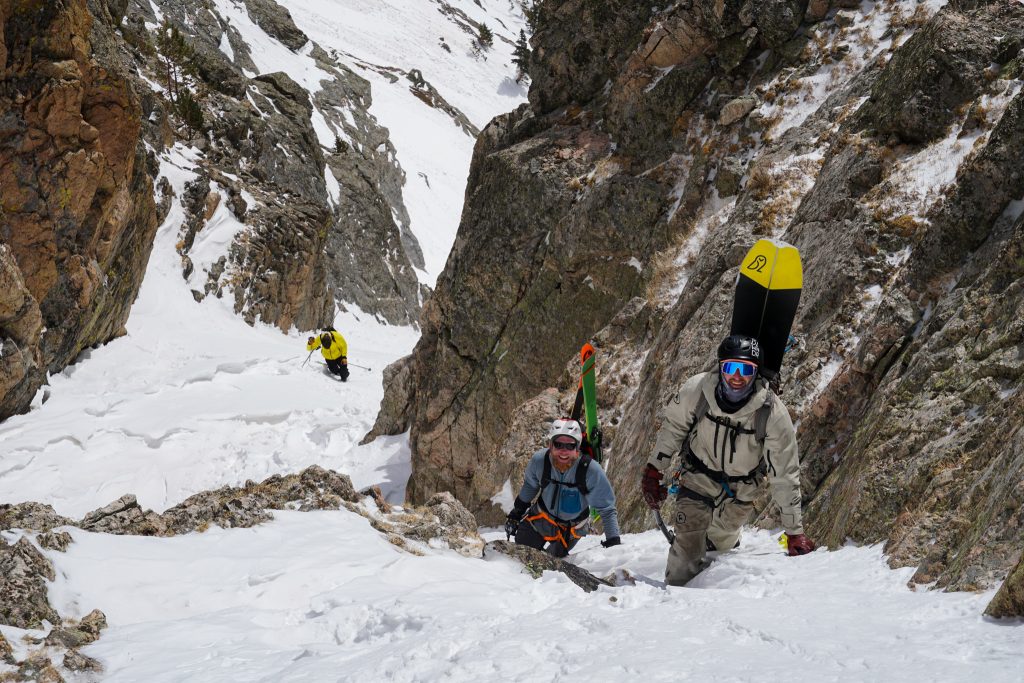
When we finally reached the ridge line, we ran into a party that had just hiked up the mellow ridge and was going to go top-down on the line. We told them that the other leg of the couloir looked much better for descending so we all hiked over there. They skied it first and looked like very good skiers.
As we were getting ready to drop in, a man in a yellow jacket appeared around the corner. We had noticed him and his partner on the climb up, following us up in downhill ski gear. He was about to walk straight through the cornice when we warned him. He responded “What is a cornice?” Oh no.
We explained what a cornice was and the dangers of them. He also had a long, thin string dangling behind him. I immediately recognized it as one of the old school avalanche strings. Before avalanche beacons, the idea was that if you got caught in an avalanche, someone could find you if the end of your string floated to the surface. I have no idea if that strategy actually works since beacons have been around for a long time. The use of one of these strings in this day and age is a major red flag.
Also, where was his partner? Apparently his partner simply did not make it up through the most challenging section of the climb, and they separated without a word. Yikes.
Jacob and Trevor dropped into the couloir first. The initial traverse beneath the cornice was around 60 degrees, but then it backed off to about 45 degrees. The snow looked pretty firm, so they made cautious turns down the upper section.
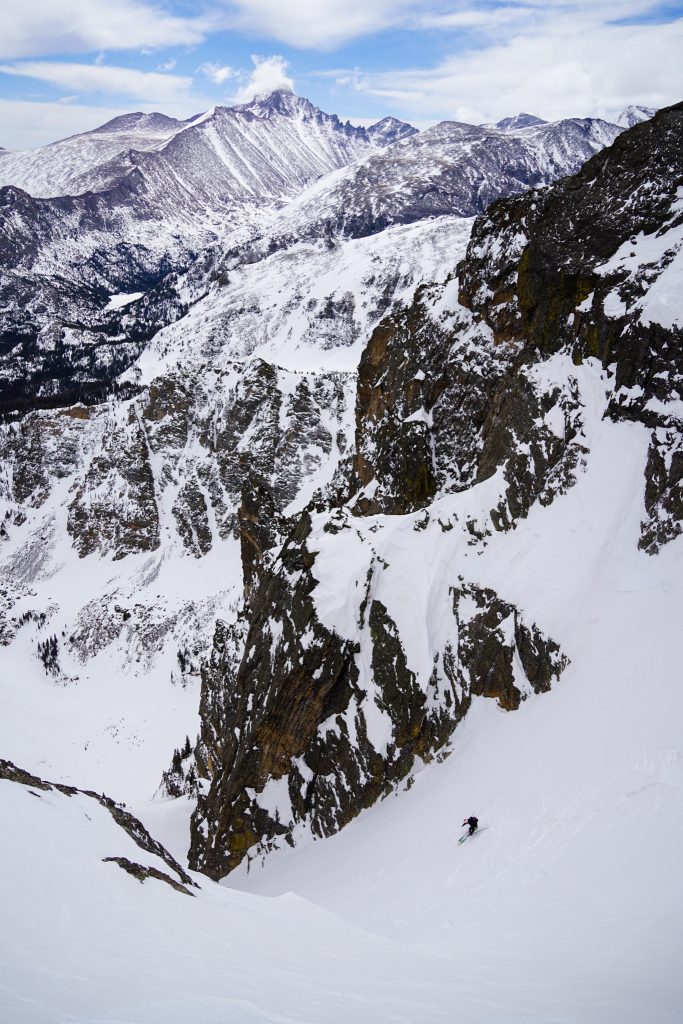
I let the other guy go in front of me since he seemed eager to get going. I followed a few minutes later and passed Jacob and Trevor, who were waiting off to the side after the initial crux. As I entered the narrowest section, I saw two skis beneath me on the slope. One was stuck into the snow at an odd angle the other was caught by its brakes. There was no sign of the skier as far as I could see. Uh-oh.
As I got lower, I eventually spotted the other skier sitting down maybe 500 feet below his skis. It appeared he double ejected and went for a long slide down the couloir but fortunately did not hit any rocks. So I collected his skis and an adjacent pole and brought his gear down to him.
Fortunately, only his pride was hurt. I was maybe too kind, but Trevor was pretty real with him about the need to get avalanche education and adopt a safer mindset in the mountains. Trevor said that he had carelessly gotten air off of a wind lip in the tightest section of the couloir, which probably led to the crash. He was lucky to be unhurt. It was a free lesson, and hopefully he will take it to heart. I remember being woefully unprepared early in my mountain career and escaping unharmed with similar lessons.
Now that we had reunited skis with skier, we could descend down to Emerald Lake. The snow was rapidly transitioning from firm to breakable mush, so we did not feel the need to ski another couloir, nor were we that stoked after watching someone fall so far.
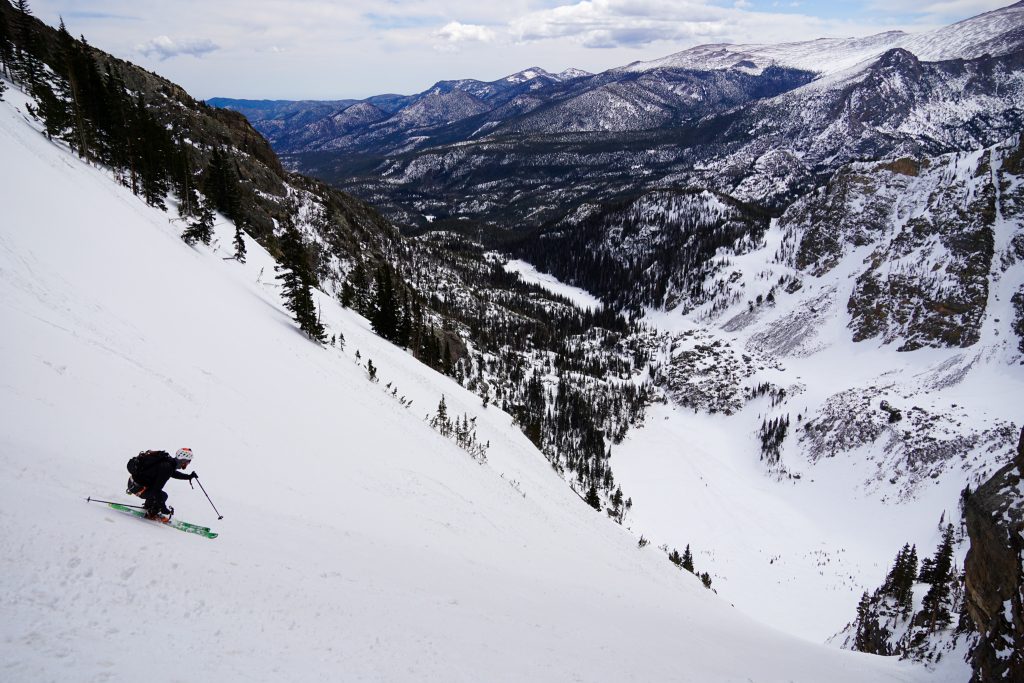
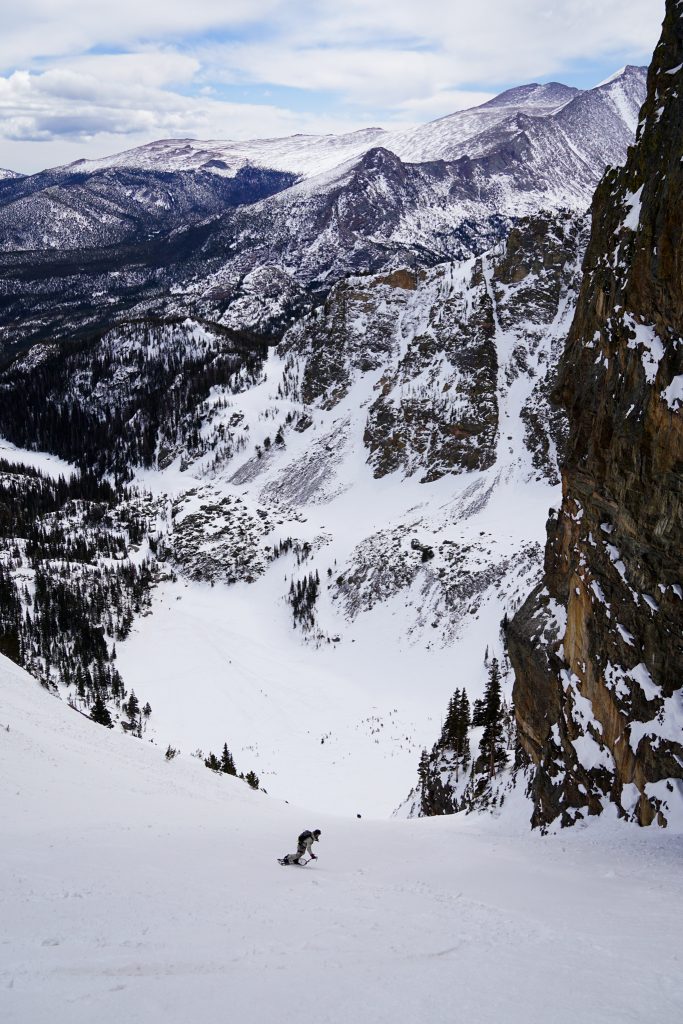
Emerald Lake was abuzz with hikers and sightseers. Ironically, there was also an avalanche course who had watched the skier slide most of the way down the couloir.
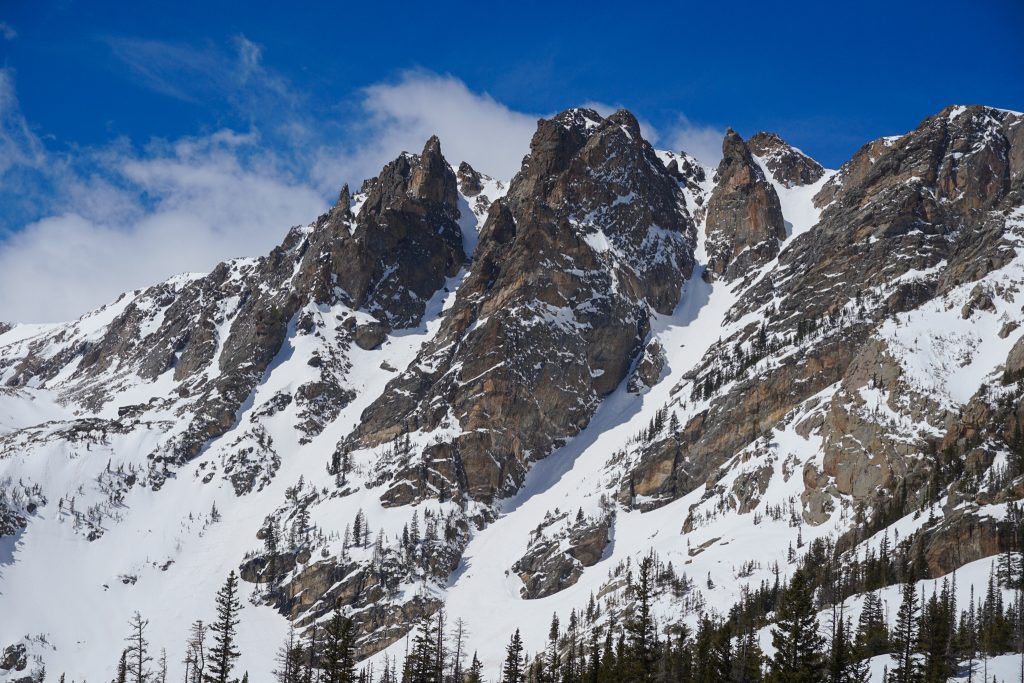
The packed trail was easy enough to slide out on skis, although Trevor decided to hike out with his splitboard.
Although we did not ski both Dead Elk and Dragon’s Tail, I felt satisfied getting to see such a striking part of the Rockies. The fall we witnessed was a reminder that Colorado’s incredible winter access is a double edged sword.
